Jaipur, the Pink City and capital of Rajasthan, was founded in 1727 by Maharaja Jai Singh. It is considered the first settlement in India with a planned urban layout, thanks to the Maharaja’s interest in architecture and astronomy.
Protected by the Amber Fort, today it is a chaotic and stressful city that draws attention due to the color of its facades and palaces, as well as the impressive forts that surround it. It is said that the pink color of most of its buildings was chosen to emulate the cities of the Mughal Empire.
If you are thinking of visiting Jaipur, the best time of the year will be during the winter months, from November to February. However, here is a little more information about the different seasons.
We know that the subject of visas can be somewhat confusing, especially for India, where obtaining one is an essential requirement for entry. In the article on how to obtain an Indian visa step by step (coming soon) you have information on how to apply for one online for up to 5 years.
It’s essential to travel to India with comprehensive insurance. We were among the first to offer the popular IATI discount, and you can now get it with Heymondo Travel Insurance as well.
You can find more information about both companies through the links provided above, or you can access the discount directly using the buttons below (in both cases, you’ll see the reduced final price on their website):
While many hotels, guesthouses, and restaurants in India offer free Wi-Fi, some travelers prefer or need a constant connection. We’ve included details on obtaining a eSIM India card with unlimited data (from Holafly) or with fixed data but cheaper (from Saily).
If you want to get it directly, here’s the link (with a discount) for both companies:
Jaipur Airport (JAI/VIJP) has direct flights to some cities in Southeast Asia and Dubai, as well as domestic flights to major cities in India. Here are the most common routes.
Aside from the plane, can anything add more to your Indian travel experience than spending 12 hours on a train full of traveling families and hawkers? If you’re traveling in Rajasthan, it’s the most comfortable and safest way.
Here you’ll find all the information you need to buy train tickets in India.
Buses arrive from many destinations in Rajasthan, but since road travel in India is a risky sport, we would recommend choosing another means of transport. If you still like it, don’t sit in the front row.
The most emblematic place in Jaipur and one of the most repeated images when we talk about the city, the Hawa Mahal, Palace of the Winds, built in 1799, impresses with its façade full of balconies from where the maharaja’s ladies contemplated life and processions.
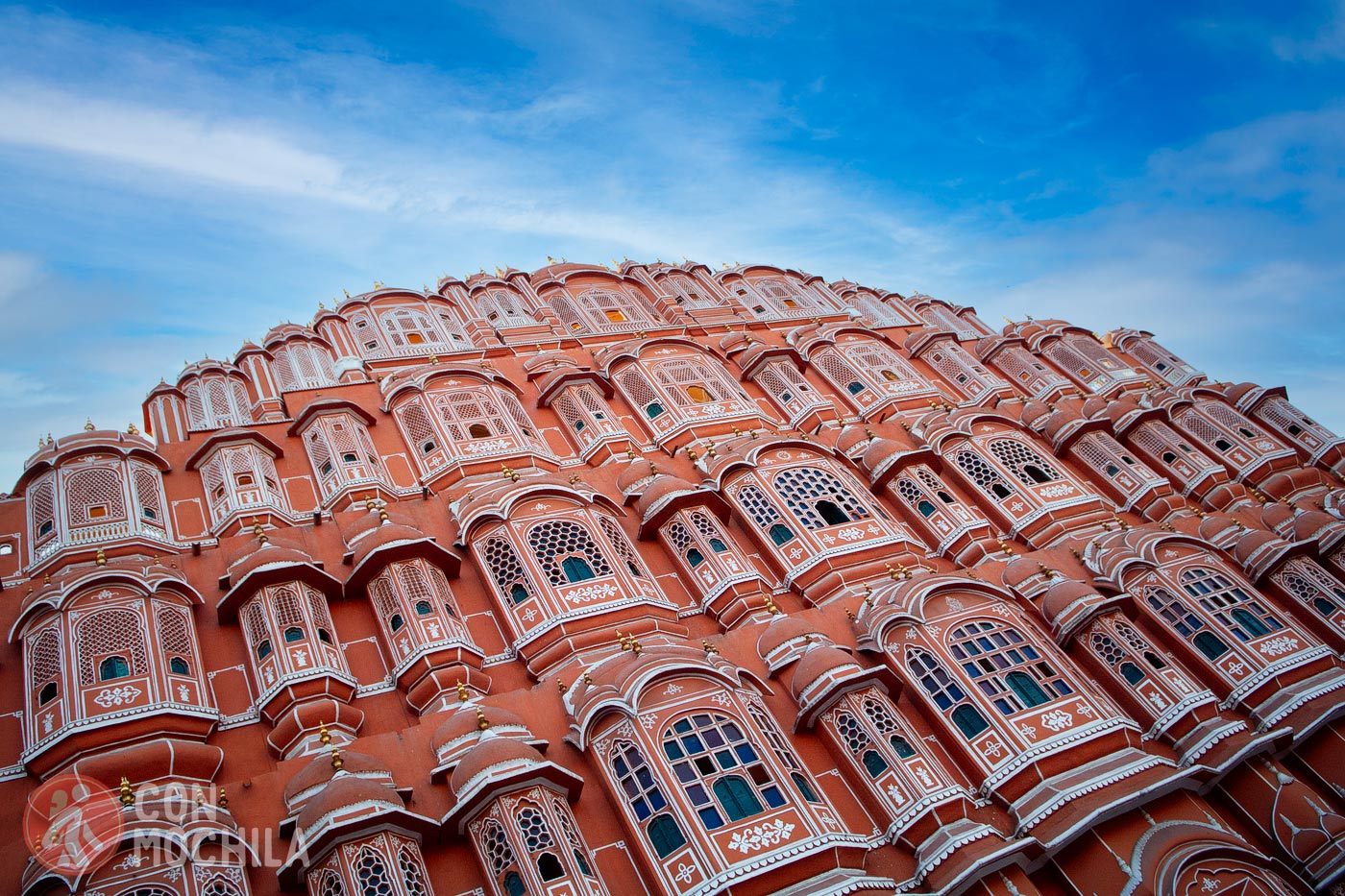
In addition to its façade, you should not miss the interior, with yellow and red corridors, stained glass windows, vaults, and a courtyard with a pond in the center where you can breathe a very peaceful atmosphere, making you forget the honking of cars outside.
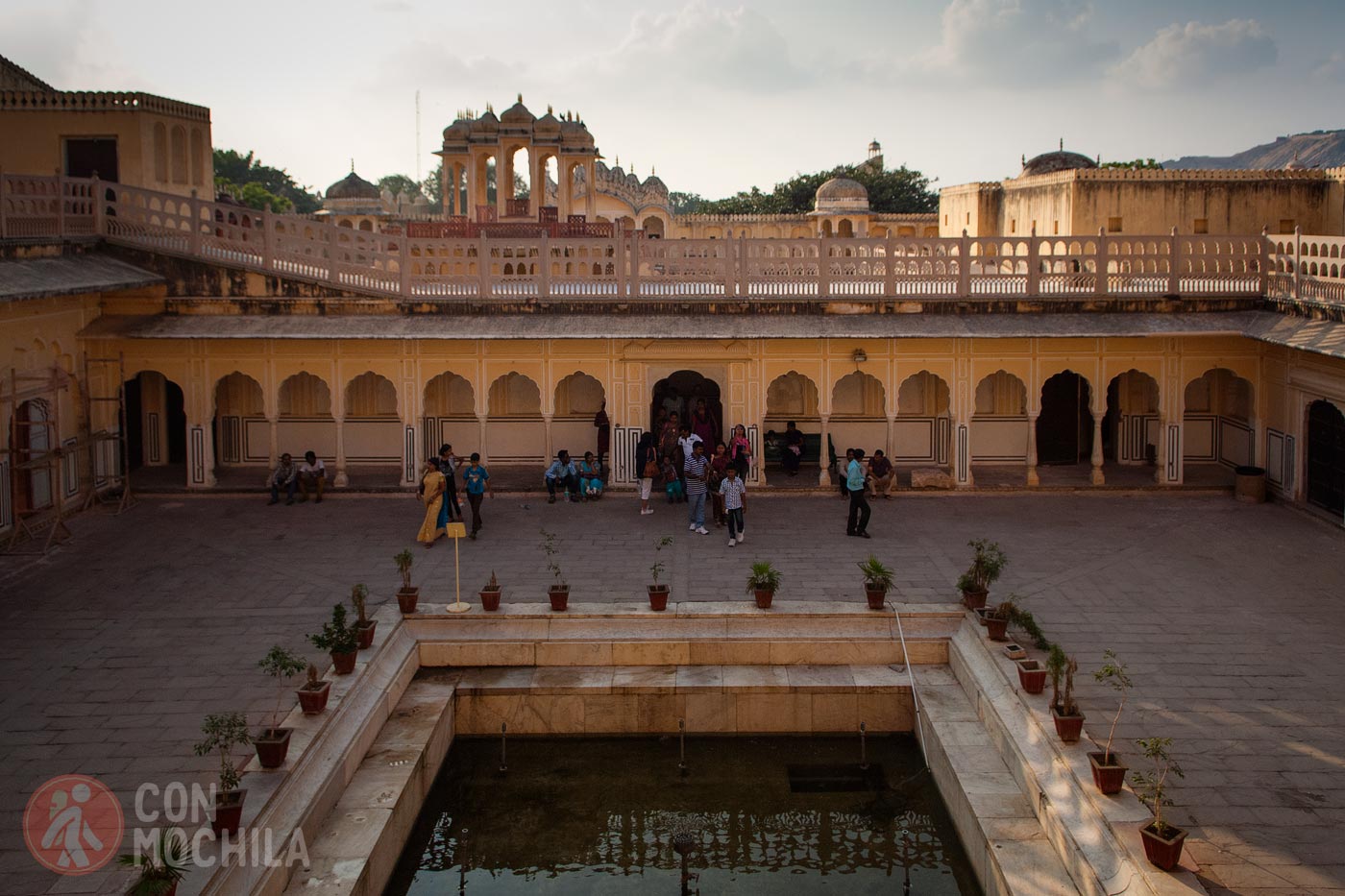
We visited Amber Fort on an extremely hot day, but it was worth it as this complex of sandstone and marble palaces built in the 16th century left us in awe. The views from below are stunning, no wonder it was declared a World Heritage Site.
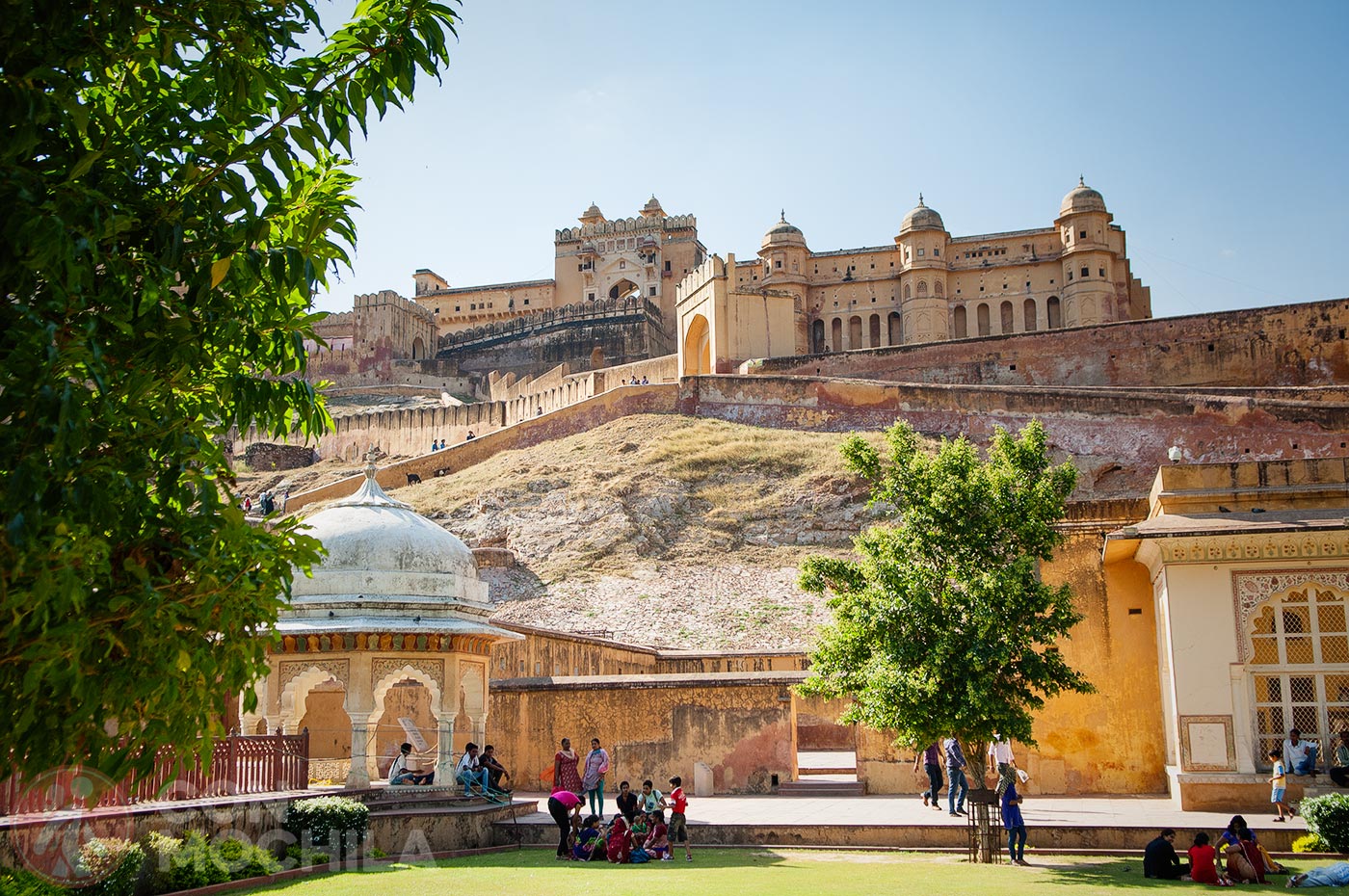
To climb up, we recommend doing so on foot and thus avoiding the use of elephants, most of which are mistreated and should not be working.
Once at the top, a succession of courtyards and doors decorated with frescoes and reliefs lead us to the different rooms, buildings and temples of the fort, although one of the most striking is the Hall of Mirrors.
Galta Temple is a temple complex, a pilgrimage site located about 10 km from Jaipur. It is said that the saint Galav lived there practicing meditation and doing penance.
It consists of several sacred water ponds and rather worn temples, the best known of which is the Galtaji Temple or Monkey Temple, built in pink stone.
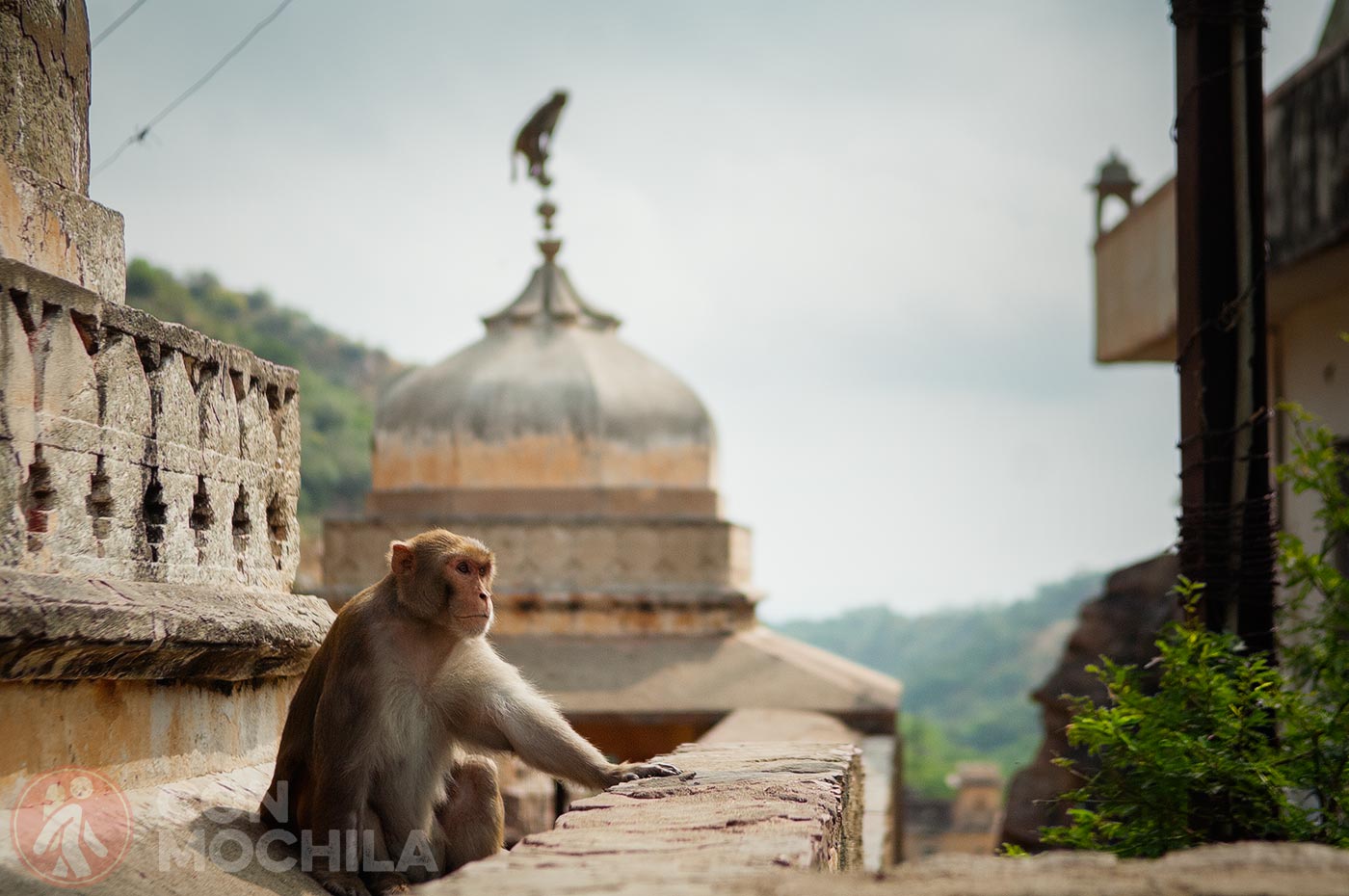
As you climb up, you can see the famous “pilgrims” who give the temple its name. From the top you can see the entire valley and the views over Jaipur.
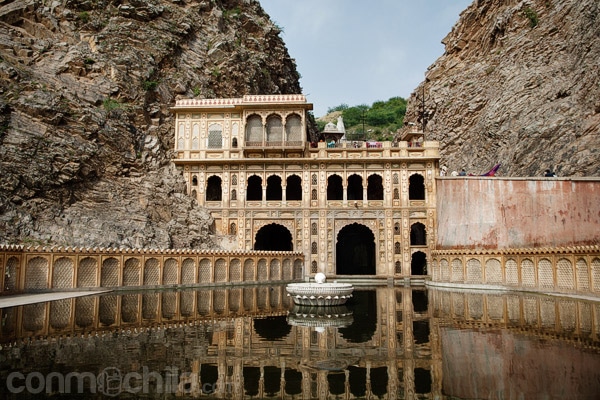
The old city of Jaipur is divided into 9 blocks, with the Jaipur Palace occupying the central one. Built in the 18th century by Sawai Jai Singh II, together with two architects who designed the complex and the walls of the old city, it is a mix of different architectures such as Islamic, Rajput and European.
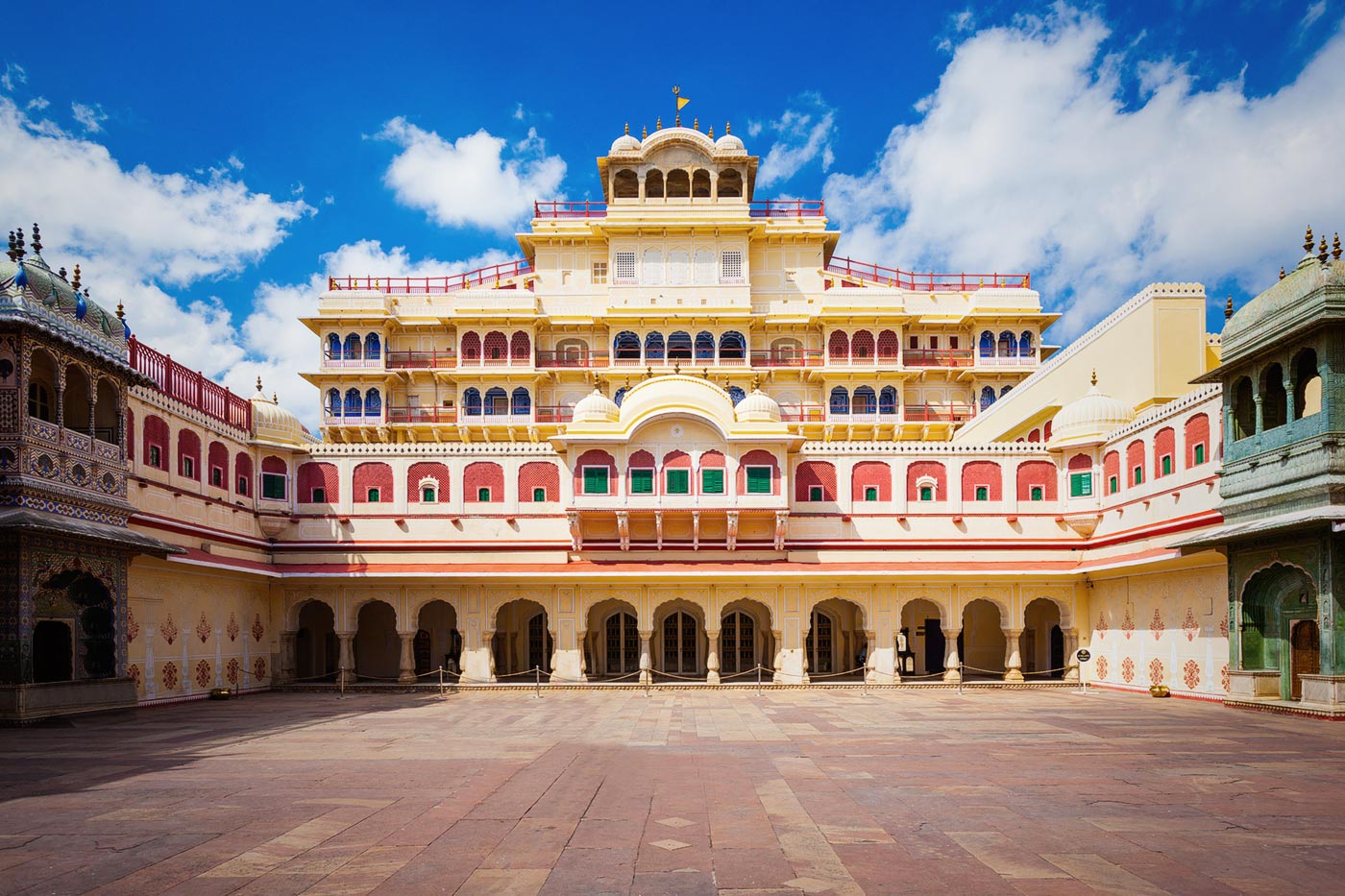
Today it is open to visitors, but much of the palace remains a royal residence. The entrance gates give us a glimpse of the majesty with which it was built.
Inside, in addition to gardens, patios and terraces, we find other palaces that display clothing and images of the maharajas, as well as military objects.
During the 18th century, Maharaja Sawaii Jai Singh II built five astronomical observatories in India. Known as Jantar Mantar, they are buildings of diverse and curious shapes, each with a specific function.
The Jaipur observatory, nominated for World Heritage status, is the most complex of all with some 20 fixed structures made of brickwork intended for naked-eye astronomical observations.
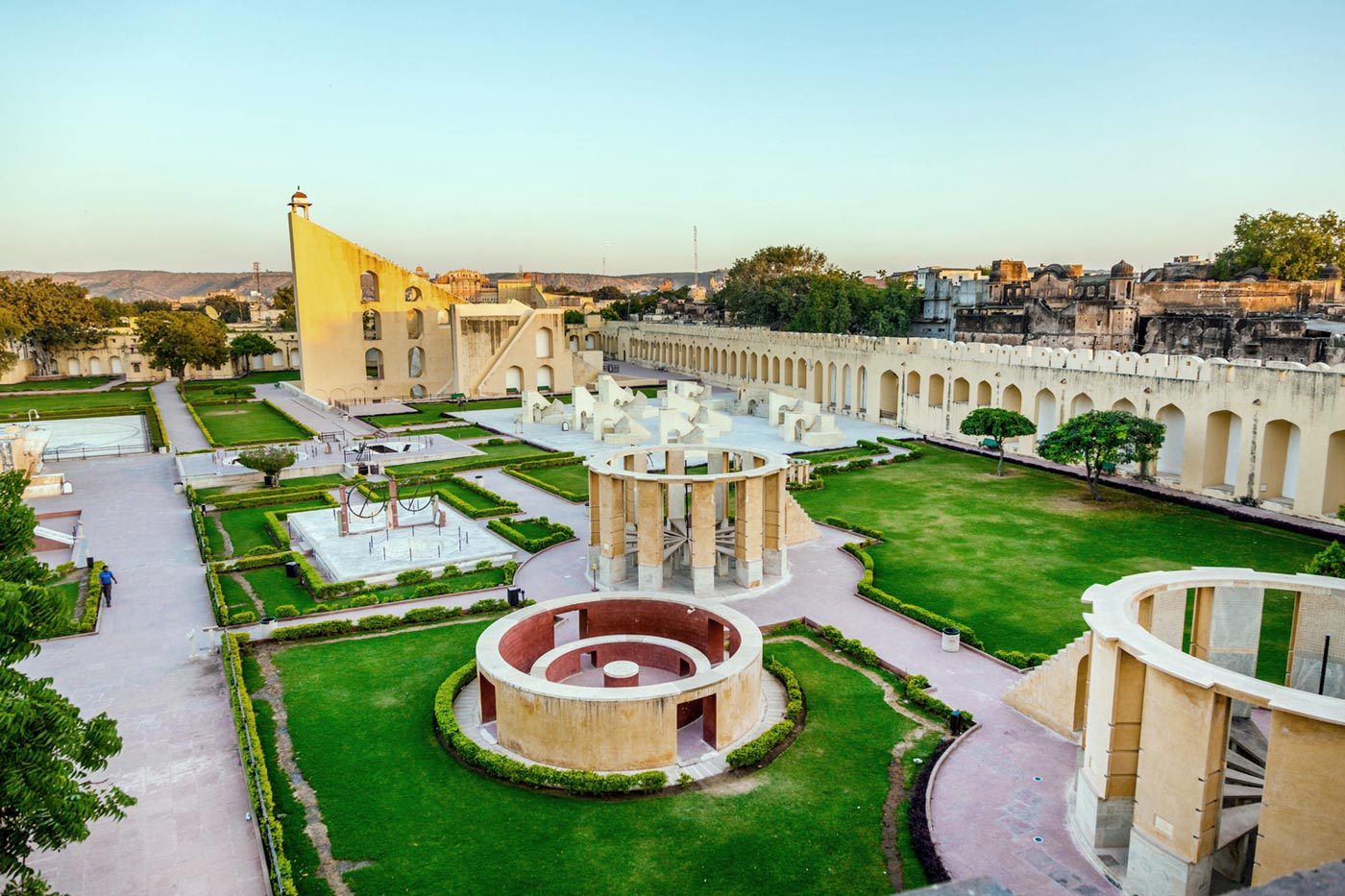
Located right next to the Jaipur Palace and within the city walls, it is an architecturally very interesting place that shows the Maharaja’s interest in astronomical knowledge.
Built in 1749 by Iswari, son of Jai Singh, founder of Jaipur, this minaret stands in the heart of the old city. As the Maratha army advanced towards the city, Iswari committed suicide, along with his wives and concubines, in a mass suicide, by throwing themselves against his funeral pyre.
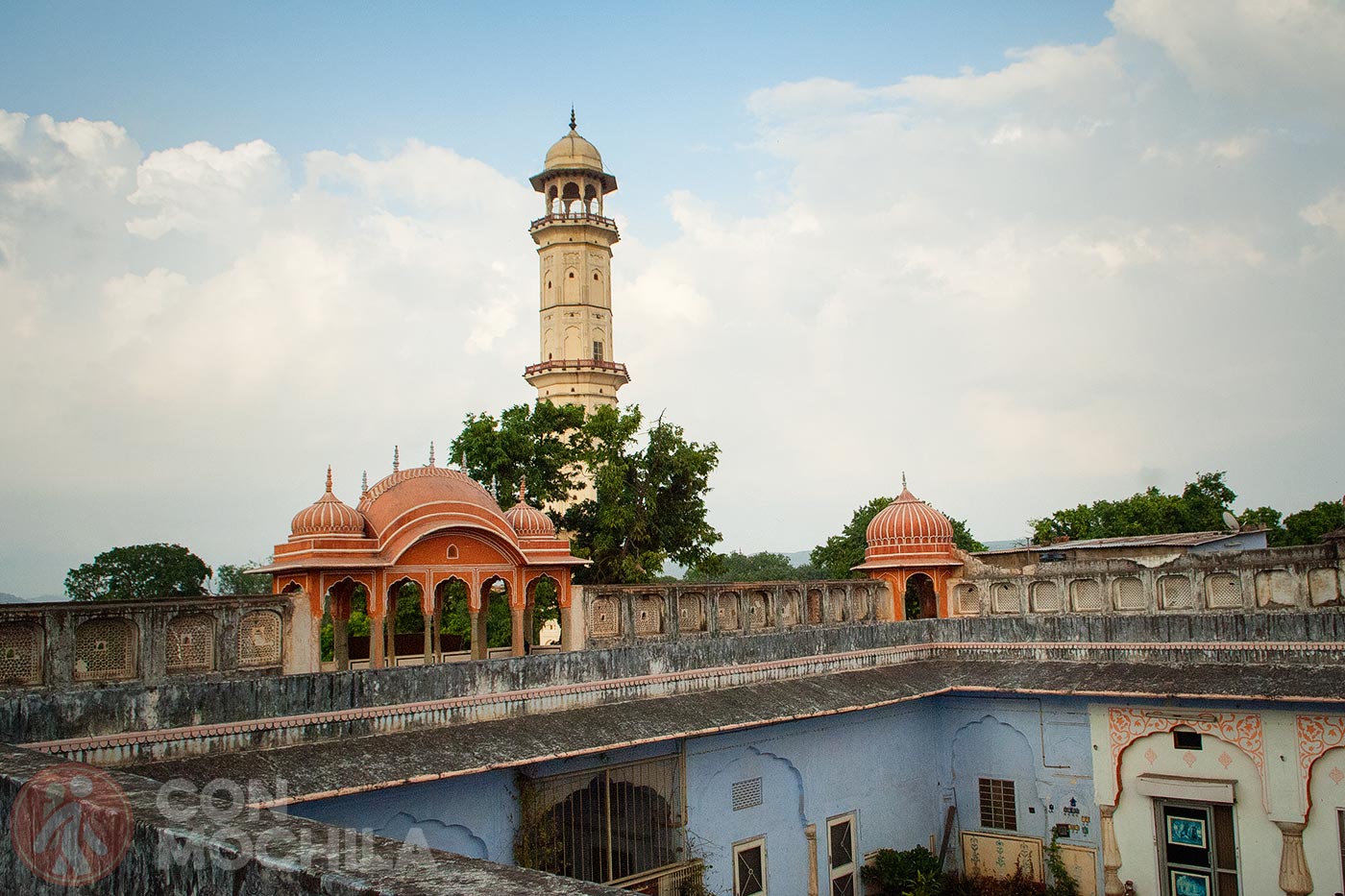
It is possible to climb to the top of the minaret via a spiral ramp and enjoy the wonderful views of the city. To find it, it is located west of the Tripolia Gate, behind the market of the same name.
Nahargarh Fort was part of the defense of the city of Jaipur along with Amber and Jaigarh forts.
Built by Maharaja Sawai Jai Singh II in the 18th century as a place of retreat on top of the city, it is said to have been named after the spirit of a deceased prince, who hindered the construction of the fort and only allowed it to continue if it was named after him.
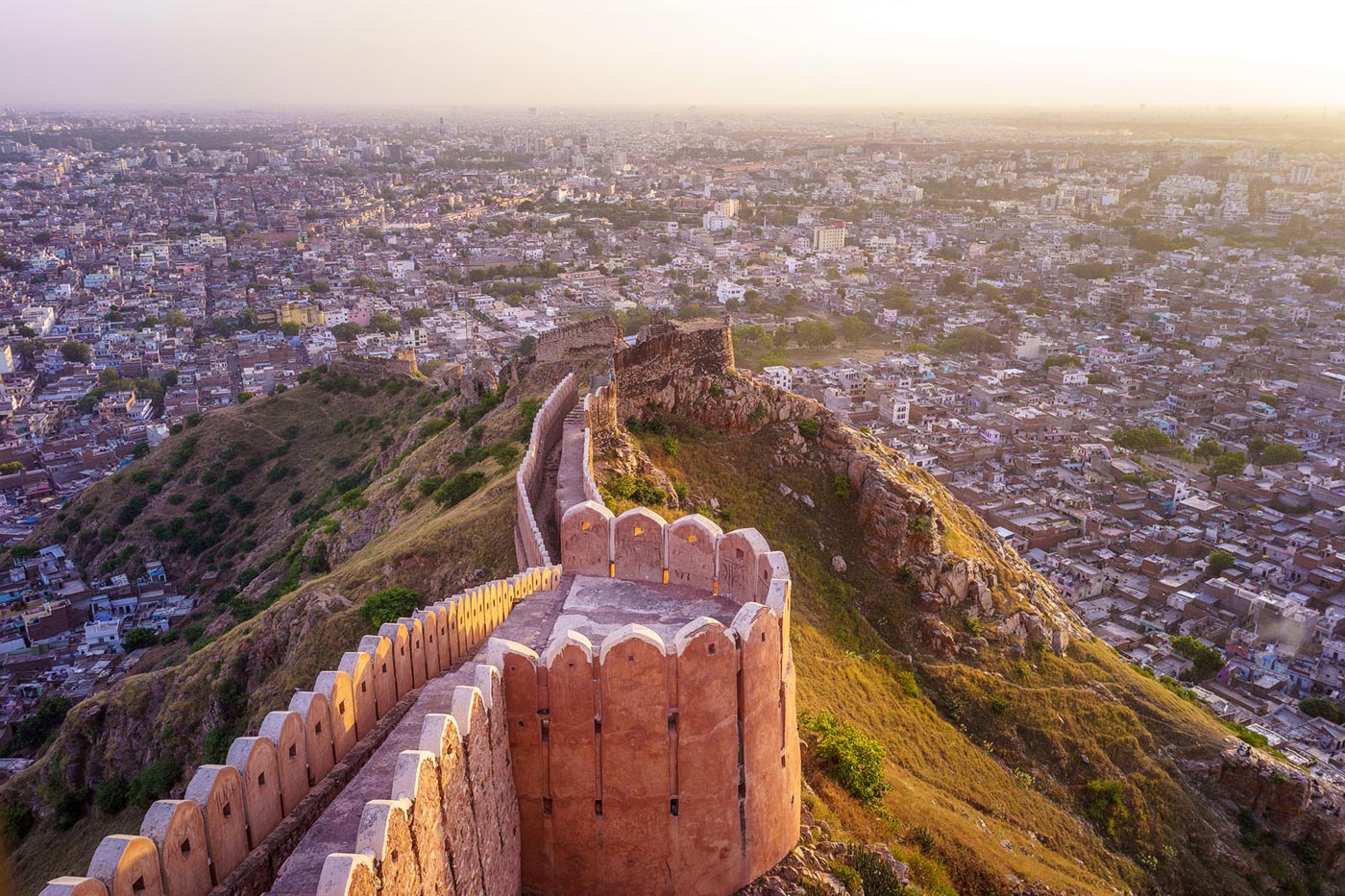
The main courtyard contains a beautiful baori (step well) and inside one of its palaces, Madhavendra Bhawan, some of the frescoes can still be made out in the corridors.
Connected to the Amber Fort by underground passageways, the Jaigarh Fort or Victory Fort, placed 400 m above Amber, was an important and imposing defensive system due to its panoramic views over the city, and because it contained a cannon foundry that the Rajputs used for artillery.
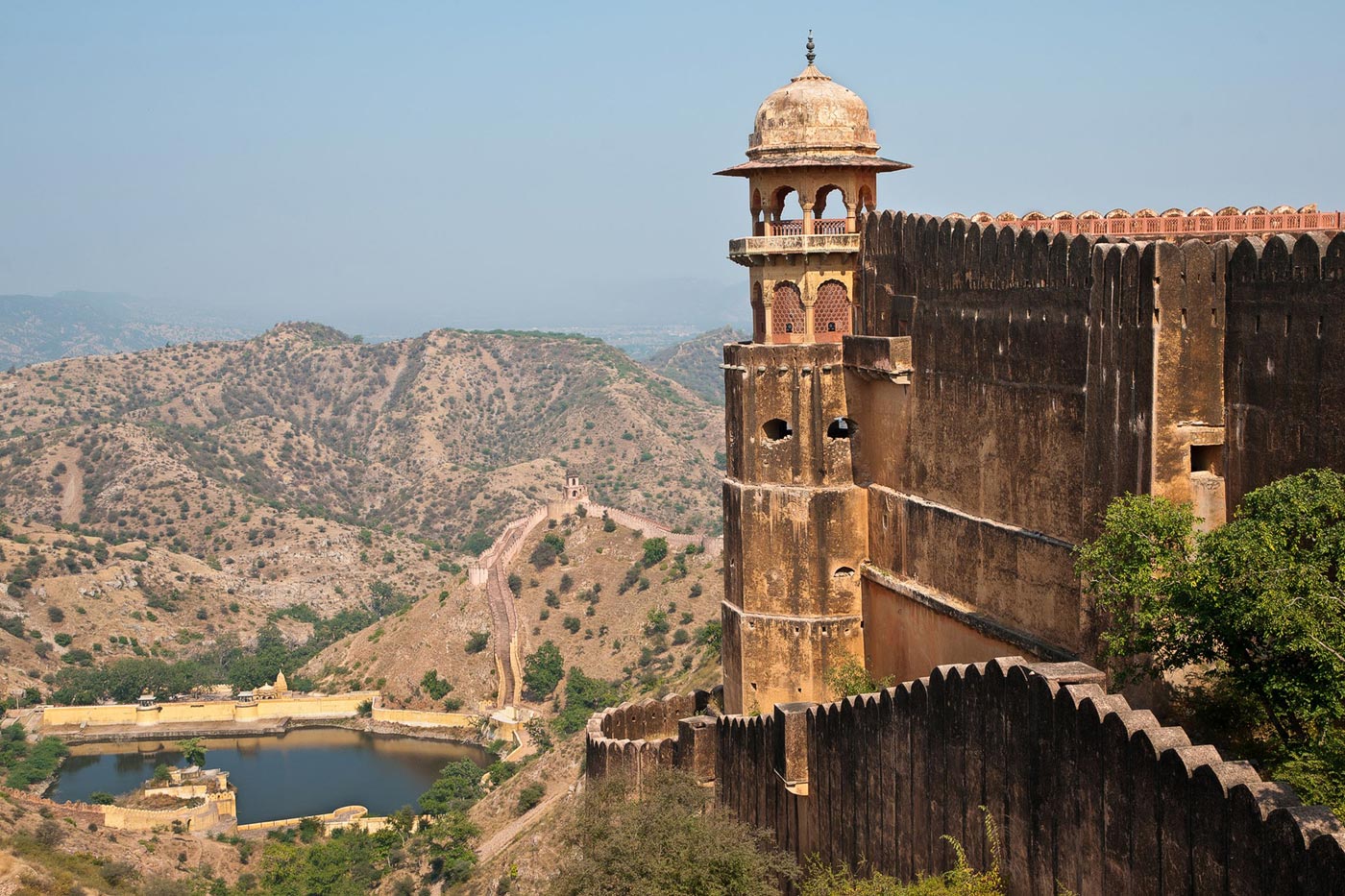
Once you have crossed the main entrance, Dungar Darwaza, inside you will find gardens and a palace, and watchtowers with lattice windows, so you can see without being seen, as well as a museum and the Jaivana cannon, the largest in the world when it was built in 1720.
Now converted into a luxury hotel, the Rambagh Palace, an example of the typical architecture of the period, and built in 1835, was the former residence of the Maharaja Sawai Man Singh II.
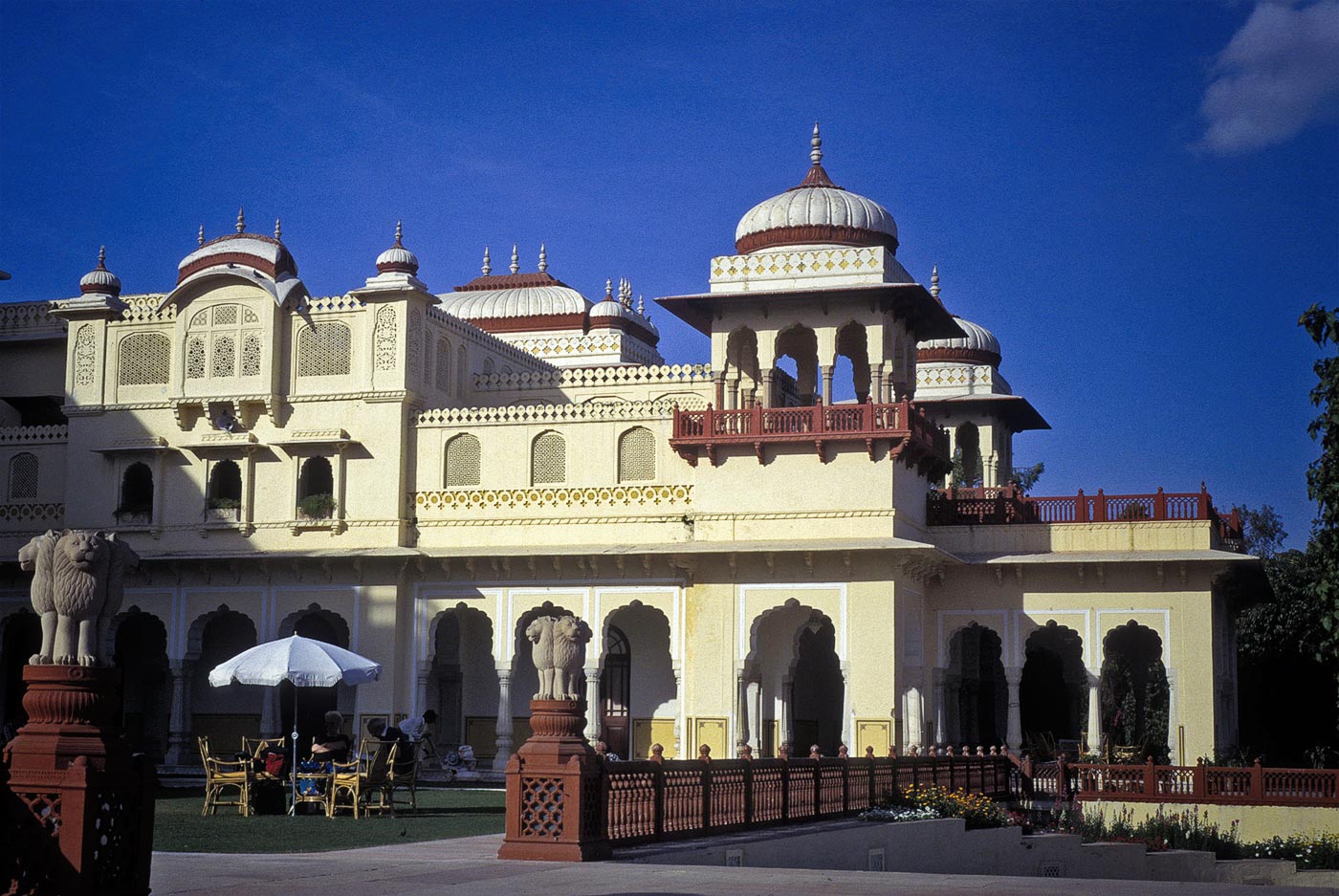
It was once the residence of the queen’s favorite maids or even a hunting lodge, as it was located in the middle of a deep forest. Even today it retains its extravagant splendor and marble details, domes and well-kept gardens inside.
We leave you some ideas of places to visit in nearby areas and surroundings if you have already seen Jaipur.
Being in this area of Rajasthan, it was impossible for us not to visit the Ranthambore Reserve, as we knew it was the perfect place to spot tigers as well as crocodiles, macaques, hyenas, deer, jackals and wild boars, among others.
The reserve is located near Sawai Madhopur, 2 hours by train from Jaipur, although we made the trip by local bus, about 5 hours.

In the link above we leave you step by step how to go to the Ranthambhore reserve and how to obtain the documentation to enter easily and cheaply, as well as a video with our visit to the park. We stayed at Aditya Resort, an austere but practical place.
Abhaneri is a small ruined village, about 95 km from Jaipur, known for its monuments from the Rajput era. The most famous and special of these is the Chand Baori (step well), one of the first to be built in Rajasthan, in the 10th century. It has 13 levels of steps and a depth of 20 meters where monsoon water is collected.
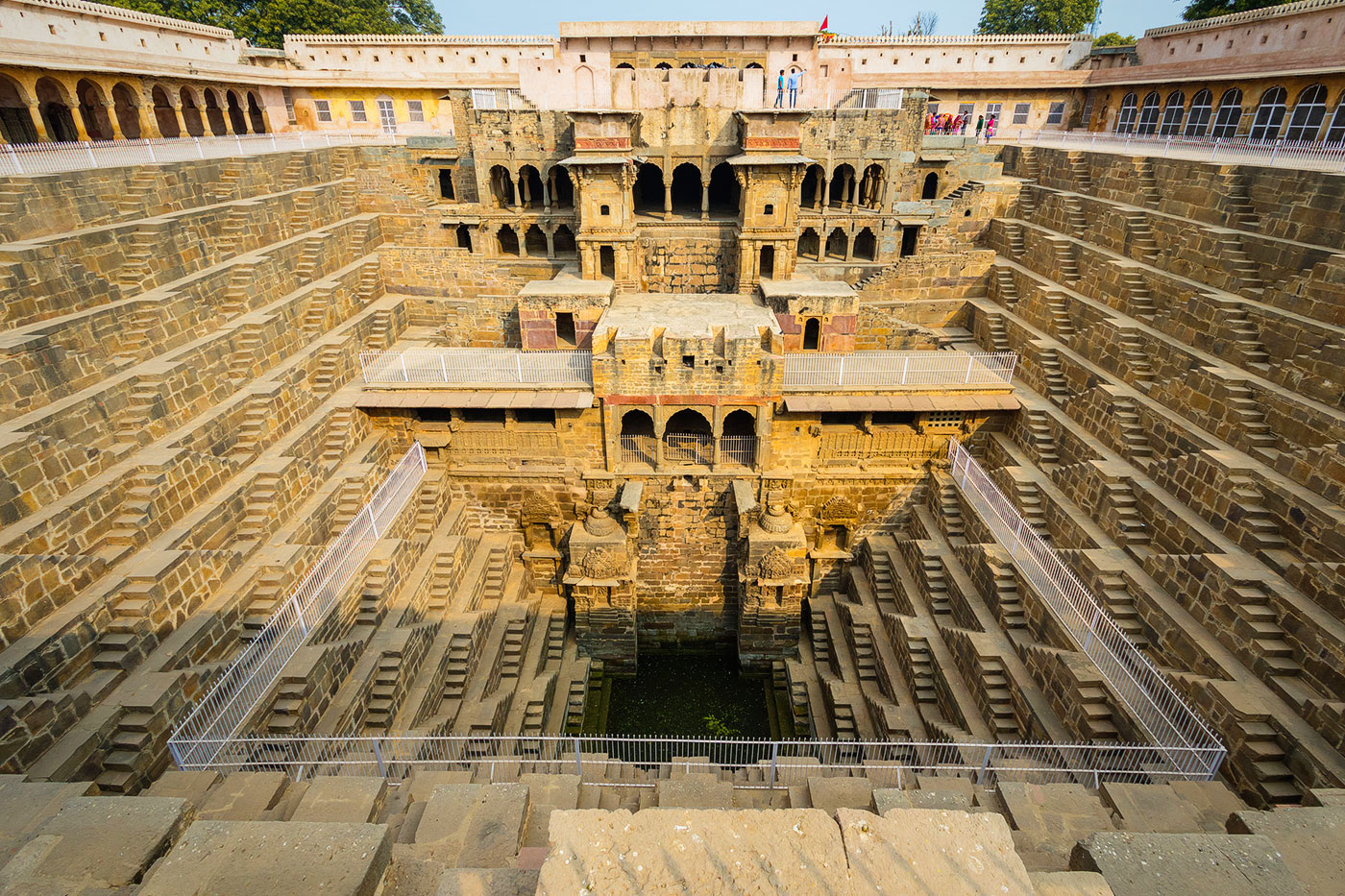
The baori is dedicated to performing ablutions (a purification ritual preceding certain religious ceremonies) before visiting the Hashat Mata temple located right next door. Chand Baori was also the place where members of the royal family would go on the hottest days of summer.
You can access it from Jaipur on your own or on a private tour.
n honor of his beloved second wife, a member of the Sisodia Rajput clan, Maharaja Sawai Jai Singh built this garden in 1728, so that she could take a break from the bustling city.
The garden, at 6 km from the center of Jaipur, is a jewel of Mughal style and traditional Indian architecture, and on the walls you can see paintings inspired by the love between the goddess Radha and Krishna..
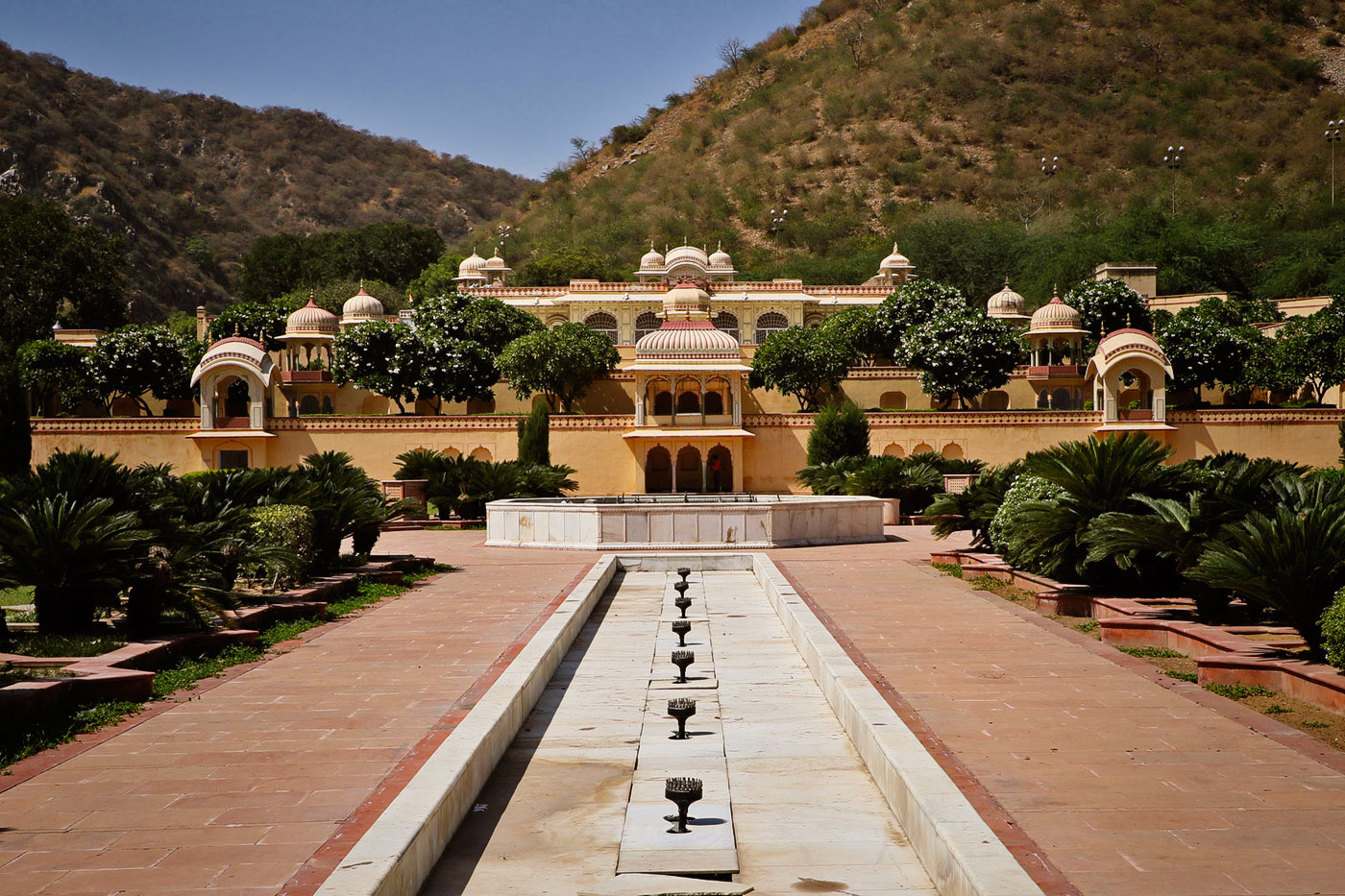
Within the complex we find fountains, galleries and pavilions as well as sanctuaries dedicated to Shiva, Vishnu and Hanuman.
And finally, we have put together a list of activities of all kinds so that your visit to Jaipur is complete:
For us, Rajputana Guesthouse has become the best place we have stayed in India. A couple of kilometers from the center of chaotic Jaipur (10 minutes by rickshaw), Rajputana guesthouse is a family home run by Kipy, ready to welcome guests and make them feel at home.
You can enjoy the terraces, roof terrace, lounges, and the dining room, where you will gorge yourself on home-cooked food as you wish. The rooms are very clean, like the whole house, and have a private bathroom, fan or air conditioning, as well as Wi-Fi.
We leave you with other recommended accommodations by price range (from cheapest to most expensive), so you can choose the one that best suits your budget.
The best way to get around Jaipur is by rickshaw. You can negotiate with the driver to take you to Amber Fort for the day or even to take you to different points in the city. Always remember to negotiate the prices, some drivers will not hesitate to ask you for an excessive amount.
Click on the image and it will take you to a new Google Maps window with all the points of interest to travel around Jaipur.